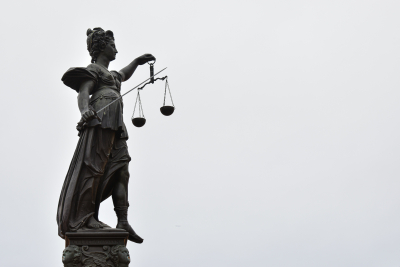Last week marked the start of the asset recovery Directive negotiations. The Council and the European Parliament have adopted their respective positions, and now, together with the European Commission, they will negotiate to finalise the text of the directive. Both the Council and the European Parliament (EP) supported many of the key points of the European Commission’s initial proposal, with certain improvements on some key issues. This sets a positive tone for the negotiations, which will last at least until the end of the year.
The Commission’s proposal for the revision of the directive on asset recovery and confiscation was published in May 2022, which Transparency International EU welcomed. The proposal had some shortcomings, which we outlined in our briefing. Rules for asset confiscation matter. Authorities need to be able to take profits away from criminals, be they members of organised crime groups or corrupt officials.
The directive addresses all steps of asset recovery. This begins with tracing and identifying assets, and then freezing them. Before a court can decide whether these assets are to be confiscated, assets in the hands of the authorities (such as a cars or houses) must be maintained and managed. The new directive strengthens these processes for freezing and confiscation and delineates clearly defined tasks for authorities in each EU Member State. Confiscated assets are to be owned by the state, but governments can decide on specific, targeted further use or restitution of these assets. Rules on the further use of assets remain a key question, left unaddressed by the Commission’s proposal in a detailed way.
We believe it is essential that stolen assets can be returned to the victim population. When a state confiscates an asset from criminals, this asset should be used in helping the victims of these criminal acts, instead of ending up in the general state budget. Italy already has great examples of reusing assets in a socially responsible way: a house previously owned and used by the mafia can become a new community house.
Such systems should apply to money stolen both inside and outside the EU: when Tunisia’s former dictator hid his assets in Europe, that money was stolen from the people of Tunisia. It is only right that this stolen money is returned to the people of Tunisia. It is crucial that in cases where illicit wealth stems from a non-EU country, the Member State concerned ensures, in a transparent and responsible way, that the recovered assets will not be diverted again. These points, which are in line with international standards, are all present in the European Parliament’s position, and we hope that the final text of the directive will also include these provisions as harmonised rules for all Member States. Compensating victims should not be optional. While the Council acknowledged that victims’ rights for compensation should be taken into consideration, this is not enough.
There is another avenue to try to confiscate assets. If courts have initiated a criminal proceeding but are unable to deliver a criminal judgement against the person, the assets still can be confiscated in certain cases. These are so-called non-conviction based confiscations. The Council rightly signified that, beyond some very specific circumstances (such as the death of the accused person), Member States may specify additional options pertaining to such cases. The Parliament’s position limits the scope of non-conviction based confiscations to very specific circumstances.
A further important new tool proposed by this directive is the so-called unexplained wealth order. Some criminal investigations might not be able to prove how or when a specific crime occurred, but be able to uncover the proceeds of a crime. For example, if a low-level state official drives a Ferrari, and it is disproportionate to their legal income, this asset should be confiscated if the court is convinced it was financed illicitly. Doing so is often difficult, unless prosecutors can prove who bribed whom for what and when. Unfortunately, the Commission’s proposal would only allow this tool to be used in the context of investigations related to organised crime. While this would certainly have great use in fighting mafia and other criminal organisations, perpetrators of corruption-related crimes are distinct cases. Such a tool would be beneficial in serving justice in these cases, too.
National criminal justice systems have different traditions. While this directive is therefore only able to approximate national laws, all national transpositions should improve to achieve our common objectives, by achieving more confiscations, eliminating proceeds from criminal activities and helping law enforcement and judicial systems work. This is why it would be crucial to ensure that Member States create a strong and detailed National Strategy on asset recovery. The EP’s position would create solid ground for such work, with clearly defined minimum requirements for national strategies and additional information about statistics to be collected and aggregated at EU level.
One important divergence between the positions of the two institutions is the role of asset recovery offices when it comes to detection and tracing of assets in the context of violation of EU sanctions. The Council wants to delete this reference and believes that it does not fall under the category of criminal matters. The EP would like to keep it, which in our view is a better approach. Those trying to conceal the assets of sanctioned individuals are committing a crime. These crimes need to be pursued with criminal justice tools.
The EP’s suggested provisions would seek to create a strong register of cases with accurate and detailed information on frozen and confiscated assets. The Council’s, in contrast, leave the decision on creating a register up to Member States. The Council’s position leaves a significant part of collecting statistics optional. This solution would maintain widely divergent national systems, where, without proper information, future decision makers would have less evidence on whether progress has been made at all.
Moreover, the Council wants to delay the transposition deadline (36 months instead of a year) and allow even more time for creating national strategies. In practice, this delay would mean that statistical information about the work of the authorities under a new strategy would be seen in 2029 the earliest. While all institutional changes require time, given the fact that confiscation of frozen assets can only occur after lengthy court proceedings in the first place, such a timeline seems rather encouraging for criminals seeking to enjoy the proceeds of their crimes for as long as possible.
While finalising the text at the interinstitutional negotiations will take at least several months, both the Council and the European Parliament’s support for a strong system for confiscating the assets of criminals represents a good sign for European democracies. Criminals trying to hide their wealth in Europe should start worrying.



